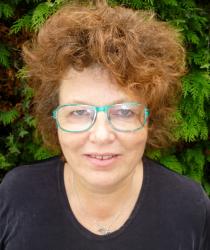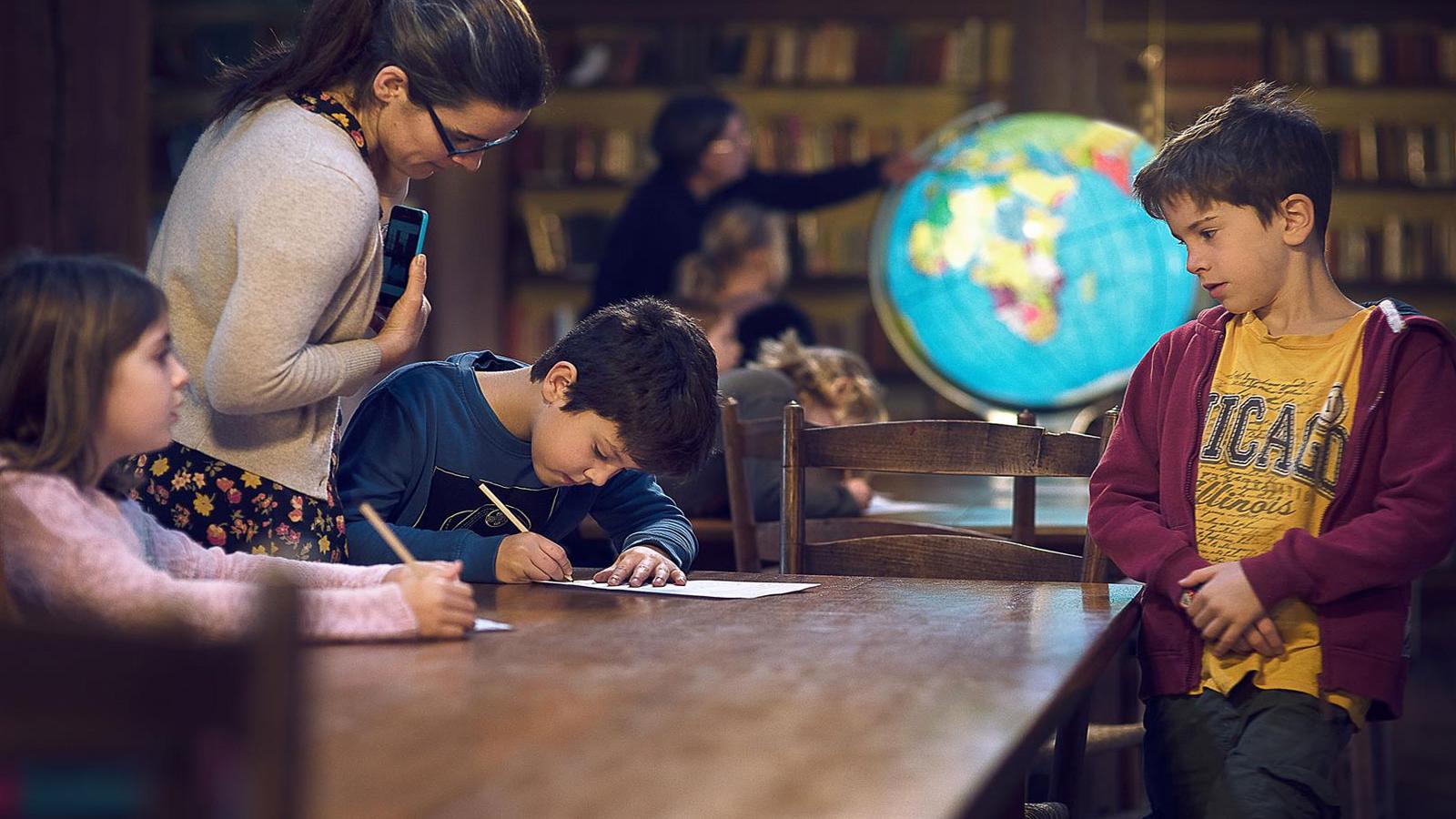
As a Hampshire girl, growing up in the village of Ropley and attending the local school, Anna Fox could be forgiven if her parents’ decision to re-route her to Bedales had come as a severe cultural shock. “It was definitely their decision; they wanted something a bit different for me and they weren’t the type of parents who would have been interested in the old-fashioned, single-sex model of private school,” Anna observes. “It was a surprise and it was also, of course, totally different from my home environment, but I was completely happy to be there. I’d spent a few days at Bedales as a type of induction to the school before I started properly and I was looking forward to the experience.”
The outdoor ethos of Bedales was one aspect of school life that completely passed Anna by. “Do you know, I don’t remember much of that side of things at all,” she laughs. “That’s possibly because I was a day-girl and to a degree, day pupils were a slightly separate breed at Bedales. I suspect that the outdoor work would have been much more geared to the boarding community. For me, it was English literature that I found especially inspirational; among the teachers, I remember John Batstone as a particularly formidable, and rather scary, figure, but there were others who were just as influential. It wasn’t that I was especially good at the subject, much to my frustration, but I was fascinated by the writer, and the subject had a big influence on me.”
The arts in their widest sense are also an important element of Anna’s memories of Bedales life. “Not so much the subject of art, which I didn’t take as an O-Level, but more the design side of things, which was always incredibly well taught,” she reflects. “Martin Box and David Butcher were great forces for good there and I particularly started to get interested in jewellery design. At what other school would you be able to get involved in a subject like that? Bedales was brilliant at fostering a sense of unassuming confidence in its pupils, unlike so many other places, where confidence can almost be bashed out of you. To this day, I feel that I can spot Old Bedalians simply from the impression of confidence that they project.”
Anna’s greatest interest, however, lay in photography, to which she had been introduced by her father, a keen amateur photographer. “Surprisingly, I didn’t study it at Bedales at all,” she remembers. “It was only when I went back into the state system after taking my O-Levels that I really started to pursue it seriously, prompted by a desire to record what was on my own doorstep.” At Peter Symonds College in Winchester, Anna also renewed acquaintance with Peter Wingent, who had formerly done a teacher training course at Bedales. “I might have been at state school, but it was still a more formal environment than Bedales,” she says. “He had just been Pete to me before; now I had to get used to the idea of addressing him as Mr. Wingent.”
Gradually, Anna continued her education in photography, with the avant-garde giants of the art proving to be particularly resonant. “I suppose that Henri Cartier-Bresson remains my primary influence, although the portfolio that I assembled when I went on to college at Farnham was heavily art-based because of my sixth form experience,” she explains. “As the years have gone by, I’ve swung round to become more of a documentary-story teller as a photographer, but that only came with time.”
Initially, Anna’s spell at the West Surrey College of Art & Design (now University for the Creative Arts) was far from happy. “I was pretty miserable in my foundation year and found it quite a shock after my school days,” she acknowledges. “I failed to get onto any of the three courses that I applied for and then spent two or three years in a variety of not very interesting jobs before re-applying to Farnham. They put me on a reserve list, but luckily for me, someone pulled out and eventually, I was in to study photography.”
Clearly, determination has been a central element in Anna’s professional success. “I just really wanted to do it,” she says. “As a woman in the 1980s, A Levels were never going to be sufficient if I wanted an interesting career. Nearly thirty years later, I’m helping to organise something called Fast Forward, which is a conference to be held at Tate Modern, seeking to highlight the role of women in photography and to discuss why it has always been such a difficult profession for women to flourish in, especially as a freelance. The family angle is obviously one factor, but it isn’t sufficient explanation on its own. The truth is that it’s evident that we still live in a powerfully patriarchal society, which, by its nature, is unhelpful to women who are aiming to succeed.”
Anna, happily, has bucked that particularly depressing trend over the course of an astonishingly varied career that is now almost thirty years old. Solo exhibitions, group exhibitions, curatorial programmes, monographs and numerous publications have been crammed into a workload that has mixed the solitary with the collaborative and the local with the international in an attempt to depict everyday life with a satirical eye. “As soon as people have started wanting me for a particular style of photography, I’ve felt that they’re beginning to miss the point of my work and I’ve tried to do something as different as possible,” she observes. “If you want to be at the forefront of any art form, you have to keep breaking boundaries.”
Among the seminal moments of her career, Anna pinpoints her Cockroach Diaries and Other Stories touring exhibition of 2008-09 as a particularly significant one, taking her work from the autobiographical almost to the confessional. Two years later, her leading role in the world of modern photography was recognised by being shortlisted for the prestigious Deutsche Börse Photography prize. “There aren’t many global prizes in photography, so that was a pretty special moment in my career,” she says.
An essential part of Anna’s professional life has been as a teacher and mentor to the next generation of aspiring photographers. Since 2004, she has been a professor at her alma mater, the University of Creative Arts. In addition, Anna has for eight years been on the Guest Faculty at the National Institute of Design in Ahmedabad, India, as well as two other Indian schools, and has served as an external examiner for numerous educational institutions. “I try to be open-minded as a teacher and to ignore rules wherever possible,” she chuckles. “At Farnham, I run two-year Master’s courses (I think one-year courses are a disaster) where I don’t insist that my students hold a photography degree; the different backgrounds of the people whom I teach make life so much more stimulating.”
Anna remains enormously sanguine about the future of her chosen art form, despite accepting that artists have a hard road to hoe in Britain. “We’re not as bad as some countries, but the arts aren’t as respected as they should be in this country, certainly not by comparison with sport, for example,” she suggests. “You can’t ever accuse photography of elitism; it reaches so many people and it continues to evolve. In the internet era, the photo-book remains as relevant as ever, although today, it has changed and become part of a multi-media forum more often than not. The international element will be crucial – so many photographic histories are being uncovered in Africa, India and South East Asia that are going to open up an entirely new way of thinking about the art form. In Europe, we need to realise that there’s a bigger world out there. Our education has to change to recognise that we have so much to learn from this new history.”
For her own future, Anna identifies a couple of unfulfilled ambitions. “Having done lots of small solo exhibitions, I’d love to have a really big solo museum show,” she says. “I would also like America, which remains the major portal though which recognition in photography emerges, to have a better knowledge of my work.” To conclude, Anna returns to her Bedales influences. “Finally, I’d like to write some fiction, which, I think, has been a wish since school days. I’ve started a couple of things, but it would be good to get something finished.”
Anna Fox was interviewed by James Fairweather in June 2014.
Read an article on Anna Fox's career that was published in The Guardian in August 2014.
